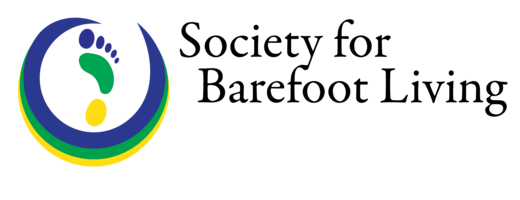Q11: How can I get my feet in shape?
Basically, by just walking barefoot everywhere as much as possible.
Getting our feet in shape generally involves two different areas. One is similar to getting any part of our body in shape, such as what we do when going to the gym, exercising the muscles and connecting tissue against increasing resistance over a period of time. People who have worn shoes for most of the time over many years usually have very weak muscles, tendons, and ligaments in their feet and ankles. The way to strengthen those muscles and connective tissue is simply to use them more, and outside the constraints of shoes. At first, some soreness may be noticed, similar to when starting any new exercise program. But that will fade as we gain the natural strength in our feet and ankles over time.
The other part of getting our feet in shape – which may take a little longer – involves doing things that will stimulate the skin on our soles to grow stronger, thicker, and more resilient. This natural process, called keratinization, results from simply walking barefoot frequently and regularly, especially on slightly rougher surfaces such as a natural packed-dirt trail or gravel.
(Note: some rougher surfaces, such as asphalt or concrete, can have an abrasive effect that may wear down one’s soles over time. This result can depend on gait–for example, if one walks with a shuffling motion allowing the harder surface to rub like sandpaper).
When keratinization takes place – due to the external stimulation of walking barefoot – cells known as keratinocytes produce more keratin, the key structural material making up the outer layer of human skin, which in turn causes the skin to slowly thicken and become structurally stronger.
This is a somewhat similar process as when small spots on the skin that are rubbed over and over, such as when wearing ill-fitting shoes, develop painful and annoying localized calluses or corns. However, the strong thick skin on the soles that develops from walking barefoot is of a different texture, usually broad and smooth, and is a natural protection from not only rough surfaces, but any potentially harmful elements that might be on the ground. From the Wikipedia article “Keratinocyte” :
The primary function of keratinocytes is the formation of a barrier against environmental damage such as pathogens (bacteria, fungi, parasites, viruses), heat, UV radiation and water loss.
The cells of the thickened skin on the soles of feet that are frequently bare are also resistant to cuts, puncture wounds, and chemical exposure. This thickened skin is sometimes referred to as “callus,” since the process of development is similar, but should not be confused with the more familiar small localized and often painful calluses that people sometimes get on their feet or hands.
The feet of experienced and long-time barefooters are strong and have soles that are thick and tough, yet flexible, sensitive, and smooth as leather. That’s the natural condition of a human foot.
